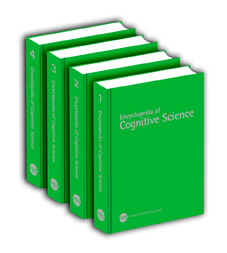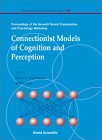Poulter S, Hartley T, Lever C (2018) The neurobiology of mammalian navigation. Current Biology 28(17): R1023-R1042
Watson DM, Andrews TJ, Hartley T (2017) A data driven approach to understanding the organization of high-level visual cortex. Scientific Reports 7: 3596 DOI:10.1038/s41598-017-03974-5
Watson DM, Hartley T, Andrews TJ (2017) Patterns of response to scrambled scenes reveal the importance of visual properties in the organization of scene selective cortex. Cortex 92:162-174
Sormaz M, Jefferies E, Bernhardt B, Karapanagidtis T, Mollo G, Bernasconi N, Bernasconi A, Hartley T, Smallwood J (2017) Knowing what from where: differential left-right and anterior-posterior hippocampal connectivity describe individual variation in semantic and topographic memory. Neuroimage 152: 400-1410.
Gilbert RA, Hitch GJ, Hartley T, (2016) Temporal Precision and the Capacity of Auditory-Verbal Short-Term Memory. Quarterly Journal of Experimental Psychology. DOI: 10.1080/17470218.2016.1239749
Chan, D, Bottomley, L, Moodley, K, Minati, L, Burgess, N., Hartley, T. (2016) The 4 Mountains Test: a short test of spatial memory with high sensitivity for the diagnosis of pre-dementia Alzheimer's disease. J Vis Exp 116
Hartley T, Hurlstone MJ, Hitch GJ (2016) Effects of rhythm on memory for spoken sequences: a model and tests of its stimulus-driven mechanism. Cognitive Psychology, 87, 135-178.
Watson DM, Hymers M, Hartley T, Andrews TJ (2016) Patterns of neural response in scene-selective regions of the human brain are affected by low-level manipulations of spatial frequency. Neuroimage, 124, 107-117
Andrews TJ, Watson DM, Rice GE, Hartley T (2015) Low-level properties of natural images predict topographic patterns of neural response in the ventral visual pathway. J Vis 15(7):3
Vernon RJW, Sutherland CAM, Young AW, Hartley T (2014) Modeling first impressions from highly variable facial images. Proc. Nat. Acad. Sci. USA 111 (32), E3353-E3361
Rice GE, Watson DM, Hartley T, Andrews TJ (2014) Low-Level image properties of visual objects predict patterns of neural response across category selective regions of the ventral visual pathway. J Neurosci 34 (26), 8837-8844
Watson DM, Hartley T, Andrews TJ (2014) Patterns of response to visual scenes are linked to low-level properties of the image. Neuroimage 99, 402-410
Hartley T, Lever C (2014) Know your limits: the role of boundaries in the development of spatial representation. Neuron 82(1):1-3[NB: comment on Bjerknes et al., 2014, Neuron]
Levita L, Bois C, Healey A, Smyllie E, Papakonstantinou E, Hartley T, Lever C (2014) The Behavioural Inhibition System, anxiety and hippocampal volume in a non-clinical population. Biol Mood Anxiety Disord. 4:4
Hartley T, Lever C, Burgess N, O'Keefe J (2014) Space in the Brain: how the hippocampal formation supports spatial cognition. Phil Trans Roy Soc B. 369(1635)
Hartley T, Harlow R (2012) An association between human hippocampal volume and topographical memory in healthy young adults. Frontiers in Human Neuroscience 6:338.
Brunton I, Hartley T (2013) Enhanced Thinking Skills and the association between executive function and antisocial behaviour in children and adult offenders: scope for intervention? British Journal of Forensic Practice 15(1)
Viard A Doeller C Hartley T Bird CM Burgess N (2011) Anterior hippocampus and goal directed spatial decision making. Journal of Neuroscience 31(12):4613-4621.
Andrews TJ, Clark A, Pell P, Hartley T (2010). Selectivity for low-level features of objects in the human ventral stream. Neuroimage 49(1) 703-711.
Bird CM, Chan D, Hartley T, Pijnenburg YA, Rossor MN, Burgess N (2010). Topographical short-term memory differentiates Alzheimer's disease from frontotemporal lobar degeneration. Hippocampus 20(10), 1154-1169.
Hartley T, Bird CM, Chan D, Cipolotti L, Husain M, Vargha-Khadem F, Burgess N (2007). The hippocampus is required for short-term topographical memory in humans. Hippocampus 17:34-48Download (pdf)
Barry C, Lever C, Hayman R, Hartley T, Burton S, O'Keefe J, Jeffery K, Burgess N (2006) The boundary vector cell model of place cell firing and spatial memory. Rev Neurosci 17(1-2):71-97. Download PDF (preprint).
King JA, Hartley T, Spiers HJ, Maguire EA, Burgess N (2005) Anterior prefrontal involvement in episodic retrieval reflects contextual interference. Neuroimage 28(1):256-67.
Hartley T, Burgess N (2005). Complementary memory systems: competition, cooperation and compensation. Trends in Neurosciences 28(4):169-170.[NB: comment on Voermans et al., 2004, Neuron]
Hartley T, Trinkler I, Burgess N (2004). Geometric Determinants of Human Spatial Memory. Cognition 94(1):39-75. Download PDF.
King JA, Trinkler I, Hartley T,Vargha-Khadem F, Burgess N (2004). The hippocampal role in spatial memory and the familiarity-recollection distinction: a single case study. Neuropsychology 18(3):405-417.
Henson RNA, Hartley T, Burgess N, Hitch G, Flude B (2003). Selective interference with verbal short-term memory for serial order information: a new paradigm and tests of a timing signal hypothesis. Quarterly Journal of Experimental Psychology-A Human Experimental Psychology 56(8):1307-1334.
Hartley T, Maguire EA, Spiers HJ, Burgess N (2003). The well-worn route and the path less traveled: distinct neural bases of route following and wayfinding in humans. Neuron 37:877-888 Download PDF. See also commentary by McNamara and Shelton (Science Direct).
Anker S, Atkinson J, Braddick O, Ehrlich D, Hartley T, Nardini M, Wade J (2003). Identification of infants with significant refractive error and strabismus in a population screening program using noncycloplegic videorefraction and orthoptic examination. Invest Ophthalmol Vis Sci. 44(2):497-504.
Maguire EA, Spiers HJ, Good CD, Hartley T, Frackowiak RSJ, Burgess N (2003). Navigation expertise and the human hippocampus: a structural brain imaging analysis. Hippocampus 13(2):208-217.
Lever C, Burgess N, Caccuci F, Hartley T, O'Keefe J (2002). What can the hippocampal representation of environmental geometry tell us about Hebbian learning? Biol Cybern 87(5-6):356-72.
King JA, Burgess N, Hartley T, Vargha-Khadem F, O'Keefe J (2002). The human hippocampus and viewpoint dependence in spatial memory. Hippocampus 12(6):811-20.
Burgess N, Hartley T (2001). Orientational and geometric determinants of place and head-direction. Advances in Neural Information Processing Systems 14:165-170
Braddick OJ, O'Brien JM, Wattam-Bell J, Atkinson J, Hartley T, Turner R (2001). Brain areas sensitive to coherent visual motion. Perception 30(1):61-72.
Spiers HJ, Burgess N, Maguire EA, Baxendale SA, Hartley T, Thompson PJ, O'Keefe J (2001a). Unilateral temporal lobectomy patients show lateralized topographical and episodic memory deficits in a virtual town. Brain 124(12):2476-89.
Spiers HJ, Burgess N, Hartley T, Vargha-Khadem F, O'Keefe J (2001b). Bilateral hippocampal pathology impairs topographical and episodic memory but not visual pattern matching. Hippocampus 11(6):715-25.
Hartley T, Burgess N, Lever C, Cacucci F, O'Keefe J (2000). Modeling place fields in terms of the cortical inputs to the hippocampus. Hippocampus 10(4):369-79. Download PDF Better Figures
Burgess N, Jackson A, Hartley T, O'Keefe J(2000). Predictions derived from modelling the hippocampal role in navigation. Biol Cybern. 83(3):301-12.
Ehrlich DL, Braddick OJ, Atkinson J, Anker S, Weeks F, Hartley T, Wade J, Rudenski A (1997). Infant emmetropization: longitudinal changes in refraction components from nine to twenty months of age. Optom Vis Sci.74(10):822-43.
Hartley T, Houghton G (1996). A linguistically constrained model of short-term memory. Journal of Memory and Language 35(1):1-31. Download PDF
Houghton G, Hartley T (1995). Parallel Models of Serial Behaviour: Lashley Revisited. Psyche 2(25).

Hartley T, Burgess N (2003). Models of
Spatial Cognition. In L Nadel (Ed) Encyclopedia of Cognitive
Science. Macmillan, London.

Hartley T, King JA, Burgess N (2003).
Studies of the neural basis of human navigation and memory. In KJ
Jeffery (Ed) The Neurobiology of Spatial Behaviour. Oxford
University Press, Oxford.

Hartley T. (2002) Syllabic Phase: A
bottom-up representation of the structure of speech. In JA
Bullinaria & W Lowe (Eds), 7th Neural Computation and
Psychology Workshop World Scientific, Singapore.
Download PDF

Houghton G, Hartley T, Glasspool DW. (1996) The representation of words and nonwords in short-term memory: serial order and syllable structure. In SE Gathercole (Ed.), Models of Short-Term Memory. Erlbaum, Hove.
Houghton G, Hartley T, Glasspool DW. (1996) The representation of words and nonwords in short-term memory: serial order and syllable structure. In SE Gathercole (Ed.), Models of Short-Term Memory. Erlbaum, Hove. Download PDF (14MB)
Watson DW, Hartley T, Andrews (2014) TJ The topographic organization of scene-selective regions in the human brain is closely linked to the statistical properties of the image. EPS January 2014 Abstracts
Watson DW, Hartley T, Andrews (2014) The functional organization of scene selective cortices in the human brain is tightly linked to the statistical properties of the image. AVA, University of York Meeting.
Watson DW, Hartley T, Andrews (2014) The topographic organization of scene-selective regions in the human brain is closely linked to the statistical properties of the image. Watson, Hartley, Andrews. VSS, Florida.
Hartley T, Hurlstone MJ, Hitch G (2013). Effects of rhythm on memory for spoken sequences: a model and tests of its stimulus-driven mechanism. BPS Joint Cognitive Psychology Section & Developmental Psychology Section Annual Conference.
Hartley T, Watson DM, Andrews TJ (2013) Consistent topographic patterns of response in scene selective cortex are strongly correlated with scene-centered image statistics. Soc Neuroscience Abstracts.
Racey C, Andrews T, Morland A, Hartley T (2011) Parametric adaptation for size change in object selective cortex. Soc Neuroscience Abstracts.
King JA, Foustanos I, Bird CM, Hartley T, Burgess N (2010) The influence of post-traumatic stress on hippocampally-mediated spatial memory. CNS 2010
Racey C, AlNajashi S, Hardikar S, Pavlidou A, Hartley T (2010) Processing of landmarks in place selective cortex: effects of parametric manipulation of viewpoint. HBM 2010
Hartley T, Harlow R (2009) Human hippocampal gray matter volume is correlated with performance on a topographical memory task. Soc Neuroscience Abstracts.
Bird CM, Chan D, Hartley T, Pijnenburg YA, Rossor MN, Burgess N (2008) Topographical short-term memory is selectively impaired in early Alzheimer's Disease but not in the temporal variant of frontotemporal lobar degeneration. Soc. Neuroscience Abstracts.
Hartley T, Buckley R, Scott-Wilson, UJ (2008) Efficient View Independent Recognition of Landmarks. EPS July 2008 Abstracts.
Hartley T, Hurlstone MJ, Hitch GJ (2008) Temporal effects in serial memory. ICP 2008 Abstracts
Hartley T, Bird CM, Chan D, Cipolotti L, Husain M, Vargha-Khadem F, Burgess N (2005). The 4 mountains test: hippocampal damage selectively impairs topographical processing of spatial scenes over very short delays. Soc. Neuroscience Abstracts. Download poster (pdf, 10MB).
Barry C, Hayman R, Hartley T, Jeffery K, Burgess N (2005) Learning within a geometric model of place cell firing: data and simulations. Soc. Neuroscience Abstracts.
Hartley T (2005) The 4 mountains test: hippocampal damage selectively impairs topographical processing of spatial scenes over very short delays. Lay language summary prepared for Neuroscience 2005 Press Book. Download summary (everyday language, pdf, 15kB).
King J.A., Burgess N., Hartley T., Vargha-Khadem F., O’Keefe J (2001) Bilateral damage to the human hippocampus selectively impairs allocentric as opposed to egocentric spatial memory. Soc. Neuroscience Abstracts, 27:74.1.
Hartley T, Burgess N, Henson RNA, Hitch G (2000). Modeling temporal structure in verbal STM. Int J Psychol;35 (3-4):298
Jackson A, Hartley T, O'Keefe J, Burgess N (1999). A predictive geometric model of place field shape and location. Soc. Neuroscience Abstracts, 24:556.1.
Anker SE, Atkinson J, Braddick OJ, Ehrlich DL, Hartley T, Wade J (1997). A preliminary analysis of visual acuity in infants followed up from the second Cambridge infant vision screening programme. Perception 26(6):785-786.
Ehrlich DL, Braddick OJ, Atkinson J, Weeks F, Hartley T, Anker SE, Wade J, Rudenski A (1997). Infant emmetropization analysed by refractive decomposition. Investigative Opthalmology & Visual Science 38, S980.
Ehrlich DL, Braddick OJ, Atkinson J, Anker SE, Weeks F, Hartley T, Wade J, Rudenski A (1997). Infant emmetropization from 9 months of age. Perception 26(6):770.
Braddick OJ, Hartley T, Atkinson J, Wattam-Bell J, Turner R (1997). fMRI study of differential brain activation by coherent motion and dynamic noise. Investigative Opthalmology & Visual Science 38, S919.
King J, Atkinson J, Braddick OJ, Hartley T, Nokes L, Braddick F. (1997). Dissociation of visually guided action from visual judgement in Williams syndrome children. Perception 26 (6):762.
Atkinson J, Braddick OJ, Anker SE, Ehrlich DL, King JA, Hartley T, Castanera de Molina A, Sireteanu R, Alves da Silva O, Pinto, L Dias, F, Vital-Durand F, Pinzaru G, Angi M, Atkinson S (1996). Co-ordinated infant videorefractive screening programmes in six European centres. Investigative Ophthalmology & Visual Science, 37, S111.